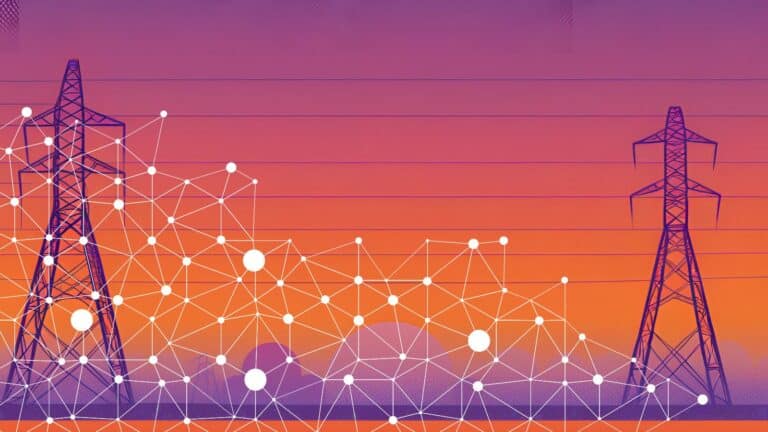This event summary reflects the authors’ understanding of key points made in the course of the discussion. It does not necessarily represent the views of the Center on Global Energy Policy. The summary may be subject to further revision.
Contributions to SIPA for the benefit of CGEP are general use gifts, which gives the Center discretion in how it allocates these funds. More information is available on our Partners page. Rare cases of sponsored projects are clearly indicated.
The Center on Global Energy Policy at Columbia University SIPA held a webinar on March 18, 2025, to explore the potential of enhanced geothermal systems (EGS)—in which water is circulated through man-made fractures in hot rock in the subsurface—to help supply rising US and global power demand. The event, which was held under the Chatham House rule, brought together participants from academia, think tanks, the energy industry, financial institutions, and the government. This roundtable report summarizes the presentations and discussions that took place.
The main insights that emerged from the webinar are as follows:
- As a source of firm, clean power, EGS can likely help supply the world’s rapidly growing power demand without emitting any greenhouse gases.
- The costs and flow rates of EGS have been transformed by the integration of know-how and techniques from unconventional oil and gas production.
- The capital costs of EGS projects underway today are approaching the US Department of Energy’s (DOE) level for commercial liftoff, are a decade ahead of the National Renewable Energy Lab’s technology targets, and appear to be on the same trajectory as photovoltaic (PV) solar projects over the last decade.
- Geothermal could meet as much as 15 percent of global electricity growth through 2050, while also providing heat to industry and buildings.
- Barriers to speeding up the development of EGS projects are (1) high up-front costs and risks constraining development capital; (2) delays in permitting and the installation of transmission lines and interconnects; (3) limited geologic and geophysical data that can be used for resource characterization; (4) inability in some locations to obtain power purchase prices that reflect the dispatchability and lack of greenhouse gas emissions of the power; and (5) community acceptance.
- Each of these barriers can potentially be addressed through public and private solutions.
Governments around the world have yet to realize the extent to which learning from unconventional oil and gas production has enhanced the potential of EGS, and they have generally not included geothermal in their decarbonization plans or provided it the same level of financial support that goes to other renewable energy sources and nuclear power.
The remainder of this roundtable report summarizes the presentations made by the moderator and four speakers and relays discussions that occurred during the webinar.
The Potential Value Proposition of EGS for Supplying Rising Global Power Needs
Power is the fastest-growing form of energy consumed globally. This is due to increasing demand for air conditioning and industrialization in developing countries, decarbonization and the associated electrification of end uses such as transportation and heating, and the addition of data centers.[i] The moderator discussed the advantages of EGS relative to other sources of energy in helping to meet that growing demand. As they observed, EGS does not emit greenhouse gases like fossil fuels. Unlike other intermittent renewable sources like wind and solar, EGS can provide firm power. It is also a secure domestic resource. EGS already has a skilled workforce in the United States from unconventional oil and gas production as well as a robust supply chain. These factors should enable a faster ramp up compared with other non–fossil fuel energy sources. EGS can also create local jobs that last much longer than wind and solar jobs because of the need for ongoing drilling and monitoring of flow rates and temperatures.[ii]
The moderator pointed out that another advantage of EGS is that it can be used for several other high-value purposes in addition to generating electricity. These include storing heat for use during power demand spikes, generating heat for industrial purposes and district heating, and enabling lithium extraction by pumping to the surface geothermal brines circulating through subsurface hot rock formations. One participant indicated that the Salton Sea in southern California is an area that is receiving considerable attention for lithium extraction.
Technology Breakthroughs Potentially Enabling the Commercialization of EGS
According to one of the presenters, geothermal energy has long been recognized as a potentially large source of electric power: the heat within the earth is sufficient to provide a nearly inexhaustible supply of electricity. Until recently, however, attempts to use geothermal energy at commercial scale have been disappointing. The speaker noted that geothermal-sourced electric power output in the US, for example, has scarcely changed since 1990. It provided less than 2 gigawatts (GW) of electric power output in 2022, which equals 0.4 percent of total US electric output that year.
The presenter attributed this lack of progress to the geothermal methods long in use. One of these methods is drilling wells to access hydrothermal systems, which produce hot water from naturally fractured reservoirs in the subsurface. While several prolific hydrothermal fields have been discovered to date, this kind of geothermal resource is rare and hard to find, and therefore not capable of contributing significantly to meeting the world’s clean power needs.
As the presenter explained, another method is EGS with vertical wells. This method was tested numerous times between 1970 and 2023, with disappointing results. The causes of failure—rapid falloff in the temperature of produced fluids, inability to achieve commercial flow rates, and lack of connectivity between injector and producer wells—all relate to the limited fracture surface area created by hydraulic fracturing in vertical wells. A new approach was needed to overcome this limitation. The solution turned out to be not something completely novel but rather adapting technologies, workflows, and skills already used effectively for unconventional oil and gas production.
The presenter pointed out that within this transformation the most impactful change has been replacing vertical wells with hydraulically fractured horizontal wells like those used in the Permian Basin and other unconventional reservoir plays. This has allowed operators to create hundreds of times more fracture surface area per well, resulting in excellent connectivity between injector and producer wells, higher flow rates, and extended thermal longevity. Given that these factors are the primary drivers of heat production, EGS economics have been vastly enhanced.
The presenter also indicated that EGS development is experiencing a trajectory of productivity improvement like what occurred with unconventional oil and gas development even beyond the ability to drill horizontal wells. They observed that drilling performance in deep hot rocks has dramatically improved with the use of modern, high-tech drilling rigs in the last few years. Before 2021, 150 days on average were required to drill a 12,000-foot-long well. In 2021, the US government–funded Utah FORGE project demonstrated that the number of drilling days could be cut by more than half using modern oil and gas drilling technologies. Building upon this success, Fervo Energy can today drill a well of that length in only 15 days. The presenter attributed this to the use of more sophisticated drilling rigs and drill bits with longer downhole lifetimes.
As the presenter pointed out, horizontal sections have also gotten longer. The first hydraulically fractured horizontal geothermal well drilled by Fervo Energy had a 3,000-foot-long lateral. Today, Fervo’s wells routinely reach 5,000 feet. The presenter indicated that in the future it is reasonable to expect that the wells could achieve 10,000- to 15,000-foot laterals, which is typical of longer unconventional oil and natural gas wells. In the last few years, flow rates have improved from 7,000 to 70,000 barrels of water per day, due to a combination of larger-diameter well bores and longer laterals. Larger flow rates translate to higher power outputs per well. This speaker indicated that in the last few years, Fervo Energy’s performance has improved from 3 megawatts (MW) to 10 MW per well, with further improvements anticipated.
As this presenter explained, deeper wells can tap hotter rock formations, which greatly increases the per-well power output. Fervo’s first horizontal EGS wells, at Project Red in Nevada, had a bottom home temperature of 375⁰F. At its Cape Project in Utah, drilling progressed over time to a bottom temperature of 435⁰F. This presenter believes that 625⁰F is within reach using presently available technologies, indicating that Mazama Energy is currently executing a demonstration project at those temperatures at the Newberry Volcano in Oregon. Globally, there are research and development efforts underway targeting “Super-Hot Rocks” – rocks with temperatures exceeding 705⁰F. While one will encounter temperatures sufficient to generate power from geothermal resources by drilling deep enough anywhere on the planet, subsurface temperatures at depths reachable with current drilling technologies are considerably hotter in the western third of the continental US than those further east. Therefore, EGS advancements hold promise for enabling near-term prolific geothermal power production across large parts of the west, unlike with hydrothermal resources, which by their nature are restricted to small geographic areas.
Lessons from the US Department of Energy’s Pathways to the Commercial Liftoff of EGS Report
The next speaker described the lessons learned in the US DOE’s “Pathways to Commercial Liftoff: Next-Generation Geothermal Power” report.[iii] They indicated that the next generation of geothermal technologies could dramatically expand the resource potential in the United States. Current US hydrothermal power output is about 2 gigawatts (GW), with generation primarily in Nevada and California. The DOE estimated that the ultimate domestic potential of the hydrothermal resource is 40 GW. By contrast, the potential national resource from EGS is estimated to exceed 5,000 GW. For context, present US power generation capacity totals 1,300 GW.
The DOE’s Enhanced Geothermal Shot energy goal is 90 GW by 2050. Contributions are expected to come from the western states by 2030, with south-central states and the eastern seaboard from Virginia to New York contributing by 2040.[iv]
What does EGS commercial liftoff by 2030 look like? According to this speaker, deployment would be needed in 4 to 6 states to validate success in different geologic conditions and would produce 2 to 5 GW of geothermal power. The required investment is estimated to be $20-25 billion, with a 60 percent cost reduction from the DOE’s 2023 estimate. There would also be multiple large-scale (30 plus MW) demonstration projects with high-value power purchase agreements that reflect the value of having clean, firm power. In addition, site selection and development would be done in partnership with communities.
This speaker saw a clear path to cost competitiveness for next-generation geothermal. Capital expenses for EGS are expected to decline rapidly over the next ten years. The national average capital expense in 2021 was $28,000 per kilowatt (kW). The 2035 Enhanced Geothermal Shot target is $3,700/kW.[v] This is equivalent to an unsubsidized levelized cost of energy (LCOE) of $45 per megawatt hour (MWh), which is very competitive with utility-scale solar and wind with storage and combined cycle natural gas in the US. As the speaker pointed out, cost reductions will be driven by improvements in exploration, in well and reservoir construction, and in the power plant.
The speaker then identified five key challenges to commercial liftoff of EGS as well as potential solutions to them from the government and private sector. The first challenge is high up-front costs and risks constraining development capital and limiting geographic reach. As the speaker discussed, one potential solution to this is new financial products to reduce drilling costs, such as public/private cost-share agreements and drilling insurance programs.
The second challenge they discussed is perceived and actual operational risk for deployments. As a potential solution to this, they pointed to strategic demonstration siting and data dissemination from more than 10 early deployments, which show sustained power production.
The third challenge presented is long and unpredictable development lifecycles driven by permitting and interconnection delays. As the speaker observed, it currently takes about 7 to 10 years to develop a project on public land. The speaker indicated that centralizing geothermal-specific permitting, which allows for combining and streamlining specific steps in the permitting process where authorized, is a potential solution to this.
The fourth challenge that was presented is that existing business models undervalue the potential of next-generation geothermal. The speaker felt that government policies that incentivize higher-cost, higher-value power can help. They also saw a need for new offtake models, including the utilization of waste heat.
The fifth challenge is community opposition in some instances. The presenter suggested that this can be addressed through adherence to long-established induced seismicity and environmental monitoring best practices and early, frequent, and transparent community engagement.
Fervo Energy’s Experience Developing EGS Projects
According to the next speaker, Fervo Energy was founded eight years ago with associations at Stanford University and ample input from oilfield technology. Thus far, the company has raised $800 million for EGS projects.
The speaker explained that Fervo’s first venture was Project Red, which had an electricity production target of 3.5 MW. The horizontal well was accompanied by a vertical monitor well equipped with fiber optic temperature sensing. Investors were monitoring to see if the temperature of the rock formation declined during the first year, which occurred with previous technology. Between November 2023 and October 2024, the temperature actually increased slightly from 339⁰F to 347⁰F. Capital expenditures came to $15,000/kW. Electricity production commenced in 2023.
Fervo’s next venture, Cape Station, is scheduled to begin production in 2026. It will be the largest EGS development in the world and is expected to produce 500 MW of power. As of April 2025, 20 of the 24 wells required for Phase I have been successfully drilled. Phase I, which will contribute 100 MW to the grid, is on track to begin operations in 2026. The remaining 400 MW will be brought online in 2028 as part of Phase II. Fervo is also using Turboden’s Organic Rankine Cycle turbines for their power plants in Phase I. A unique component of these turbines is that they consist of a closed-loop, zero-emission system. Capital expenditures are budgeted at $6,000/kW, which is near the US DOE 2030 liftoff target of $5,000/kW. This project is a decade ahead of the National Renewable Energy Laboratory Technology case. According to this speaker, with help from the tax incentives in the Inflation Reduction Act, the project will be profitable from the start. Fervo Energy has already signed power contracts worth $6.8 billion, and is a major supplier to Southern California Edison.
One participant asked about corrosive dissolved minerals experienced in a Geodynamics project in Australia. As the speaker pointed out, if the project was in a shallow hot spot, it would likely have had more issues with fluid chemistry compared with drilling deeper outside of hot spots. If the project flashed the steam or used dry steam rather than binary cycle for power production, more problems may have arisen.
This speaker indicated that for Project Cape, it took Fervo four years to obtain a permit and drill the first well. The total timeline for power production is projected to be seven years. Delays have been caused by slow permitting and transmission interconnects. In one case, the paucity of lease auctions versus the frequency of oil and gas leases played a role. This speaker suggested that growth of the geothermal industry can be accelerated by permitting reform, faster electricity interconnects, and getting its fair share of Inflation Reduction Act tax preferences. Geothermal currently receives less than one percent of Inflation Reduction Act funding devoted to new energy.
One participant asked about the role of the US National Labs in advancing geothermal resources. Participants generally agreed that the National Labs have played and will continue to play a significant role. As the speaker explained, Fervo’s initial work on geothermal came about through cooperation with Lawrence Berkeley Lab, and Sandia National Lab does important work on data processing, fiber optic sensing, new material science, new electronics, and downhole components. The National Labs already play a large role collectively in testing and developing technology at specific sites and in resource characterization and understanding the subsurface.
Global Prospects
The next speaker discussed the global prospects for EGS as indicated in the International Energy Agency’s recent study on the future of geothermal energy.[vi] The speaker indicated that EGS has substantial global resource potential if one drills deep enough to capture it. At 150⁰C (302⁰F), representing the temperature required to drive turbines and generate electricity, resources at depths less than 2,000 meters are globally sparse. However, at depths of 4,000 meters, there are substantial regions with geothermal resources, and at 7,000 meters such resources are ubiquitous.
According to the speaker for this segment, technology breakthroughs are unlocking geothermal energy’s vast potential—next-generation geothermal technical potential can be 60 times more than today’s total installed power capacity worldwide, second in potential after solar PV. This full potential can meet 140-times the global electricity demand today.
As the speaker observed, most of the skills and expertise needed to build geothermal power capacity are already available in the oil and gas industry. For every dollar invested in geothermal, between 65 and 80 percent has a significant overlap with the skills and expertise of the oil and gas industry.
One participant questioned whether a sharp ramp up in EGS would result in competition for skilled oil and gas workers. In response, another participant indicated that geothermal is starting from a fairly low level of activity today and would need to rise to a significantly higher level to create strong competition. Participants agreed that as oil and natural gas production matures in the US, workers will be available to move to geothermal.
The speaker suggested that with high transfer of skills from the oil and gas industry, cost reductions can open a huge market for next-generation geothermal globally. They indicated that currently, geothermal’s LCOE is $240/MWh, and it is expected to reach $50/MWh by 2035. This rate of cost decline is comparable to that of solar energy between 2013 and 2023. The $50/MWh cost level the International Energy Agency projects in 2035 is close to the US DOE’s Enhanced Geothermal Shot target of $45/MWh in 2035 referenced by a previous speaker. In the International Energy Agency’s low-cost case, cost reductions could unlock over 800 GW of next-generation geothermal globally by 2050. While plants would be widely distributed around the world, the largest markets are projected to be in the US, China, India, Southeast Asia, and Europe.[vii]
The International Energy Agency projects that next-generation geothermal could attract $1 billion of investment by 2035. The largest investments would be for electricity generation, with a lesser amount devoted to industrial heat. According to the IEA, geothermal could meet 15 percent of global electricity growth by 2050 in the low-cost case, while providing heat in industry and buildings.[viii]
Participants from the audience asked whether speakers are thinking boldly and big enough about EGS’ potential, and how broadly and quickly geothermal could advance if barriers were removed. The speaker in this segment indicated that moving more quickly would require many policymakers around the world to become aware of the potential of EGS and consider it an option for decarbonizing the power supply. Countries would need to put geothermal in their energy targets and decarbonization goals and adopt policies that support geothermal projects targeting predevelopment risks through risk mitigation schemes and/or provide incentives for the purchase of power and/or heat.[ix] As several of the speakers pointed out, the ultimate goal is to have geothermal compete effectively with other power sources on the basis of cost and reliability without any government preference or support.
Participants observed that within the US government, support for geothermal energy has been broad and bipartisan, but also shallow. While the DOE is spending $60-70 million per year to ramp up National Laboratory EGS activities, including resource characterization, participants felt this investment can and should be ten times larger.
One participant pointed out that these investments are more likely to be made in the United States than other countries. Only the United States and Canada (and to a lesser extent Argentina) have seen investment in unconventional oil and gas production using hydraulic fracturing technology at the level that would be needed for modern geothermal development. This participant indicated that there has been a lack of community acceptance of unconventional resource development around the world.
The speaker pointed out that addressing delays in permitting for geothermal projects and transmission lines and interconnects would also help speed up EGS development globally. One participant raised a concern about the tightness of availability and long lead times for turbines that generate electricity. Participants acknowledged these are obstacles to a fast ramp up, but pointed out that they likewise impact wind and natural gas–fired power plants.
The speaker also identified a few other potential barriers to EGS development. One of these is resource assessment, given that fewer wells have been drilled and less data is available for EGS compared with oil and natural gas resources. They suggested that improving data quality and accuracy and sharing public geological surveys could make a difference.[x]
Another potential barrier presented by the speaker was community acceptance, which has likewise been a barrier to unconventional oil and gas projects around the world. The speaker indicated that this can be addressed through government policies focused on community engagement, environmental safeguards, and benefit-sharing mechanisms.[xi]
[i] International Energy Agency, “Electricity 2025: Analysis and Forecast to 2027,” February 2025, 7–8; International Energy Agency, “World Energy Outlook 2024,” November, 2024, Table A.2a: World Final Energy Consumption, 297; Goldman Sachs, “Hyperscaler Reinvestment and Data Center Power Demand: Capex, Cash Flow, Returns, AI Training vs. Inference,” March 12, 2025, 7.
[ii] US Department of Energy, “Pathways to Commercial Liftoff: Next-Generation Geothermal Power,” March 2024, 17–18, https://liftoff.energy.gov/next-generation-geothermal-power/.
[iii] US Department of Energy, “Pathways to Commercial Liftoff.”
[iv] Ibid., 22
[v] Ibid., 26
[vi] International Energy Agency, “The Future of Geothermal,” December 2024, https://www.iea.org/reports/the-future-of-geothermal-energy.
[vii] Ibid., 89, Announced Pledges scenario, low-cost case.
[viii] Ibid., 88
[ix] Ibid., 10, 113, and 117.
[x] Ibid., 114.
[xi] Ibid., 116.





